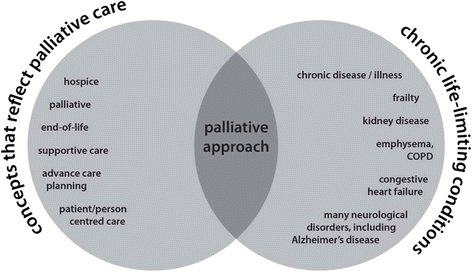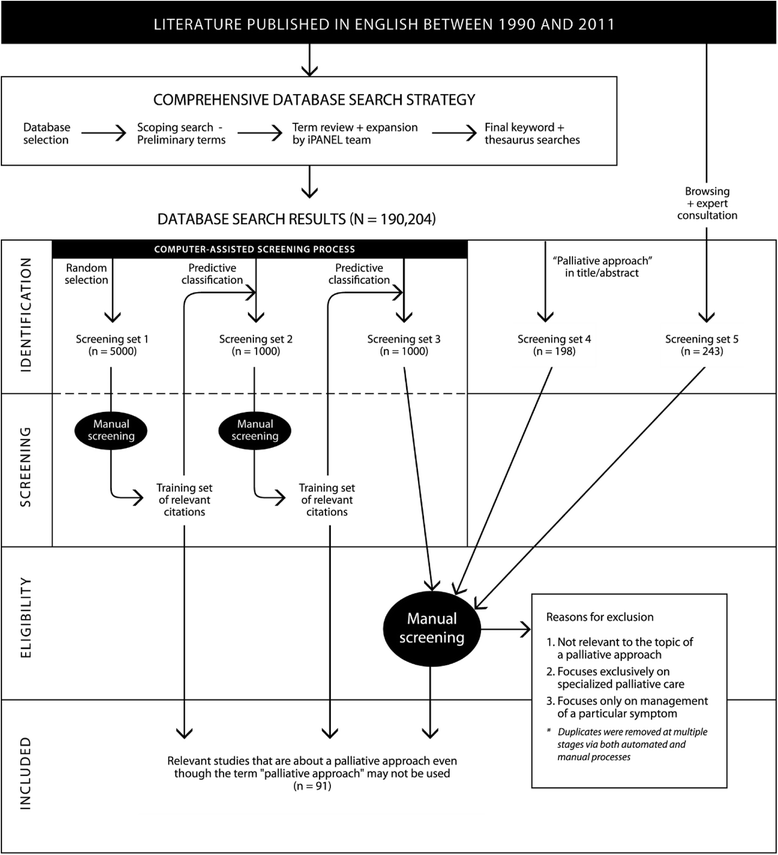Conceptual foundations of a palliative approach: a knowledge synthesis
- PMID: 26772180
- PMCID: PMC4715271
- DOI: 10.1186/s12904-016-0076-9
Conceptual foundations of a palliative approach: a knowledge synthesis
Abstract
Background: Much of what we understand about the design of healthcare systems to support care of the dying comes from our experiences with providing palliative care for dying cancer patients. It is increasingly recognized that in addition to cancer, high quality end of life care should be an integral part of care that is provided for those with other advancing chronic life-limiting conditions. A "palliative approach" has been articulated as one way of conceptualizing this care. However, there is a lack of conceptual clarity regarding the essential characteristics of a palliative approach to care. The goal of this research was to delineate the key characteristics of a palliative approach found in the empiric literature in order to establish conceptual clarity.
Methods: We conducted a knowledge synthesis of empirical peer-reviewed literature. Search terms pertaining to "palliative care" and "chronic life-limiting conditions" were identified. A comprehensive database search of 11 research databases for the intersection of these terms yielded 190,204 documents. A subsequent computer-assisted approach using statistical predictive classification methods was used to identify relevant documents, resulting in a final yield of 91 studies. Narrative synthesis methods and thematic analysis were used to then identify and conceptualize key characteristics of a palliative approach.
Results: The following three overarching themes were conceptualized to delineate a palliative approach: (1) upstream orientation towards the needs of people who have life-limiting conditions and their families, (2) adaptation of palliative care knowledge and expertise, (3) operationalization of a palliative approach through integration into systems and models of care that do not specialize in palliative care.
Conclusion: Our findings provide much needed conceptual clarity regarding a palliative approach. Such clarity is of fundamental importance for the development of healthcare systems that facilitate the integration of a palliative approach in the care of people who have chronic life-limiting conditions.
Figures
References
-
- Lozano R, Naghavi M, Foreman K, Lim S, Shibuya K, Aboyans V, et al. Global and regional mortality from 235 causes of death for 20 age groups in 1990 and 2010: a systematic analysis for the Global Burden of Disease Study 2010. Lancet. 2012;380:2095–128. doi: 10.1016/S0140-6736(12)61728-0. - DOI - PMC - PubMed
-
- Stajduhar KI. Chronic illness, palliative care, and the problematic nature of dying. Can J Nurs Res. 2011;43:7–15. - PubMed
Publication types
MeSH terms
Grants and funding
LinkOut - more resources
Full Text Sources
Other Literature Sources
Medical



